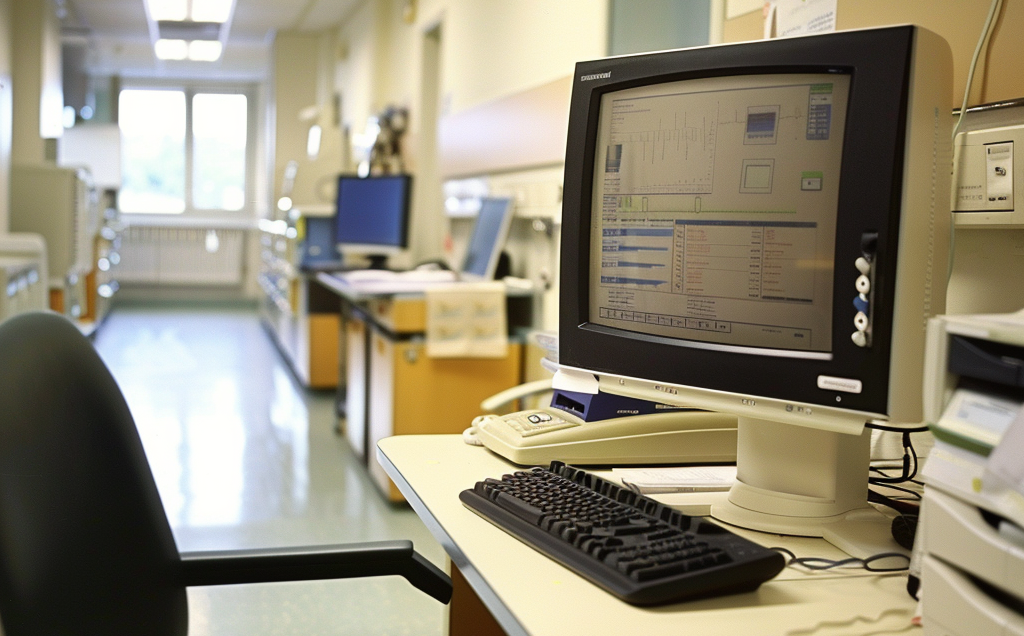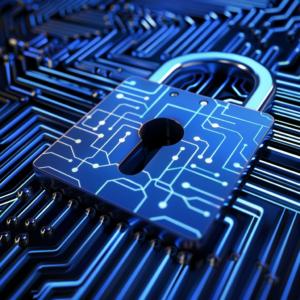
15 May Data Security in Record Retrieval: Protecting Patient Privacy
Book a Demo Today
Did you know that according to the 2023 IBM Security Cost of a Data Breach Report it cost around $4.45 million on average for a data breach, showing a 15% increase in three years and about half of companies are looking to boost their security spending after experiencing a breach. This includes improving incident response plans, training employees, and investing in tools for detecting and responding to threats.
Data security in record retrieval is not just a buzzword; it’s a necessity. With patient records and sensitive information, safeguarding data has never been more important. Cyber threats loom large, targeting valuable personal and medical data that must be protected at all costs to maintain patient trust and confidentiality.
Table of Contents
Patient Privacy at Stake
Breaches in patient confidentiality can have severe legal implications, potentially leading to lawsuits, fines, and damage to the reputation of healthcare institutions. Violating privacy requirements not only jeopardizes individual patients but also undermines the integrity of the entire healthcare system.
When patient information falls into the wrong hands due to security breaches, it can result in various consequences such as identity theft and financial fraud. Patients may experience significant financial losses and emotional distress as a result of unauthorized access to their sensitive medical records.
Identifying Key Risk Factors
Common vulnerabilities include outdated software, weak passwords, and inadequate encryption measures. These factors can expose sensitive patient information to cyber threats.
- Inadequate encryption measures
- Weak passwords
- Outdated software
Human error plays a significant role in data breaches within healthcare systems. Misdirected emails, improper disposal of physical records, and accidental sharing of login credentials are common examples of how human mistakes can compromise data security. Educating staff members on proper data handling protocols is essential to mitigate these risks.
Regular risk assessments are vital to proactively identify and address potential vulnerabilities in healthcare data security. By conducting thorough assessments, organizations can stay ahead of emerging threats and implement necessary safeguards to protect patient information. These assessments help in evaluating the effectiveness of existing security measures and making improvements where needed.
Outdated Systems and Their Risks
Using outdated computer systems and software in the healthcare industry poses significant security challenges. These legacy systems often lack the necessary security updates, leaving them vulnerable to cyber attacks.
Outdated systems may not be compatible with the latest security protocols, making them easy targets for hackers. Cybercriminals can exploit vulnerabilities in these systems to gain unauthorized access to sensitive patient data.

Email Scams and Healthcare
Phishing emails pose a significant threat to healthcare organizations, targeting sensitive patient data and financial information. Cybercriminals often impersonate reputable entities or individuals within the healthcare sector to deceive employees into revealing confidential data.
These fraudulent emails can have devastating consequences for many healthcare organizations if employees unknowingly provide login credentials or click on malicious links. Once scammers gain access, they can steal patient records, medical histories, and even financial details.
To avoid falling victim to email scams in healthcare, remain vigilant. Health care organizations should conduct regular training sessions to educate employees on how to identify phishing attempts. Encouraging a culture of skepticism towards unsolicited emails can help prevent data breaches.
Tips to Identify and Avoid Email Scams
Verify the sender’s email address: Check for any slight variations in the domain name that may indicate a fraudulent email.
Avoid clicking on suspicious links: Hover over hyperlinks to preview the destination URL before clicking.
Be cautious with attachments: Do not download or open attachments from unknown senders without verifying their authenticity.
Report suspicious emails: Encourage employees to report any phishing attempts immediately to the IT department for investigation.
Implement multi-factor authentication: Adding an extra layer of security can help protect sensitive information even if login credentials are compromised.
Unsecure Networks and Data Breaches
Unsecure networks pose significant security challenges to healthcare organizations, making them vulnerable to data breaches. When healthcare data is transmitted over unencrypted connections, it becomes susceptible to interception by malicious actors. This can lead to the unauthorized access of sensitive patient information.
Data breaches in healthcare often occur due to the lack of robust security measures in place to protect information as it travels across networks. Malware and other cyber threats can exploit vulnerabilities in internet connections, gaining access to limited datasets containing patient records and other confidential data.

Examples of data breaches resulting from unsecure networks are abundant in the healthcare industry. For instance, in 2015, Anthem Inc., one of the largest health insurers in the United States, experienced a massive data breach that exposed the personal information of nearly 80 million individuals. The breach was attributed to hackers gaining access through an unsecured network, highlighting the critical importance of securing healthcare data transmission.
Actionable Steps for Enhanced Security

- Implement strict access controls and monitor data access.
- Multifactor authentication and regular access log updates are recommended for added security.
- Employee training, cybersecurity awareness, and security audits are vital for maintaining security.
- Encrypting data, implementing backup procedures, and timely software updates are essential for data protection.
- Proper handling and disposal of sensitive information is crucial for maintaining security standards.
Data Encryption Essentials
Different encryption methods, such as Advanced Encryption Standard (AES) and Rivest Cipher (RC), offer varying levels of security and complexity. AES, commonly used in healthcare settings, provides robust protection through its symmetric key encryption algorithm.
Encrypting data both at rest and in transit is crucial for comprehensive security measures. When data is at rest, stored in databases or servers, encryption prevents unauthorized individuals from accessing patient records or confidential information.
Implementing encryption protocols for healthcare data transmission enhances privacy compliance with regulations like the Health Insurance Portability and Accountability Act (HIPAA). Encrypting data during transit, such as when sharing information between healthcare providers or with patients, adds an extra layer of security against interception or tampering.
When considering encryption methods, healthcare organizations should evaluate factors like key management, scalability, and compatibility with existing systems. Properly implemented encryption not only protects sensitive patient data but also builds trust among patients regarding the security of their health information.

Looking to cut costs and time with document services?
HIPAA Compliance for Data Security
HIPAA regulations have transformed the healthcare industry by establishing robust guidelines for data security and patient privacy. These standards not only enhance trust between healthcare providers and patients but also reduce the risk of unauthorized access to sensitive information. By implementing strict protocols for handling patient records and ensuring confidentiality, HIPAA has become a cornerstone in safeguarding data within the healthcare sector.
With the increasing use of electronic health records (EHRs) and telehealth services, HIPAA regulations play an even more vital role in adapting to these new trends while upholding data protection standards. The evolving landscape of digital health necessitates constant monitoring and updates to ensure compliance with HIPAA requirements, ultimately enhancing overall data security measures within the healthcare ecosystem.
Significance of HIPAA Regulations:
Mandates: HIPAA requires healthcare organizations, known as data holders, to implement measures to secure sensitive data.
Protection: It safeguards against unauthorized access, ensuring patient privacy and trust in the healthcare system.
Legal Framework: Failure to comply can result in severe penalties, emphasizing the importance of adherence.
Key Requirements for HIPAA Compliance:
- Risk Assessment: Entities must conduct regular risk assessments to identify vulnerabilities and mitigate potential threats.
- Data Encryption: Secure transmission and storage of data through encryption methods are essential for compliance.
- Access Control: Limiting access to patient information based on roles helps prevent data breaches.
Data security risks like outdated systems, email scams, and insecure networks are out there. By knowing the dangers and using strong security tools such as encryption, anti-virus software, and staff training, you can defend against potential breaches. Remember, being careful with data security doesn’t only safeguard sensitive info but also builds trust and ensures patients’ well-being. Stay alert, be proactive, and let’s make the digital world safer together.


